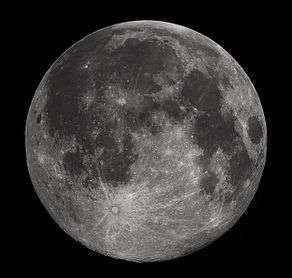Sodium tail of the Moon
The Moon has been shown to have a "tail" of sodium atoms too faint to be detected by the human eye. It is hundreds of thousands of kilometers long, and was discovered in 1998 as a result of scientists from Boston University observing the Leonid meteor storm. The Moon is constantly releasing atomic sodium gas from its surface, and solar radiation pressure accelerates the sodium atoms in the anti-sunward direction, forming an elongated tail that points away from the Sun.
The 1998 Leonid meteor shower temporarily tripled the mass of the tail by adding to the population of sodium atoms being outgassed by the Moon. The daily impact of small meteoroids produces a constant "tail" on the Moon, but the Leonids had intensified it, thus making it more observable from Earth than usual.
See also
References
- "Moon's tail spotted". BBC. 1999-06-09. Retrieved 2009-11-15.
- "Astronomers discover that moon has long, comet-like tail". CNN. 1999-06-07. Retrieved 2007-12-18.
- "Lunar Leonids 2000". NASA. 2000-11-17. Retrieved 2007-12-18.
